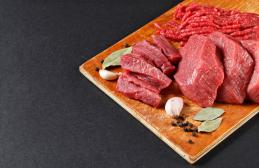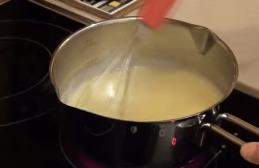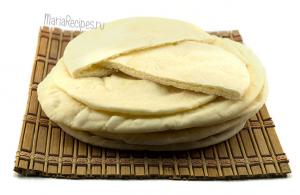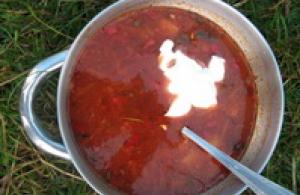Many people are not familiar with such sea fish as the hare fish. If you are interested in knowing what this sea creature is, then this article is for you. We will discuss whether there are benefits from this fish. We will also find out whether it poses any harm to the human body.
To see this fish in full, you need to consult a reference book. The point is that she is not sold head on. You can only purchase fragments of its fish body, so to speak. They are sold in purified form. Therefore, it is very difficult to understand what kind of fish it is in its original form. There is a lot of deception on fish counters. Since the hare fish is often passed off as a simple hake or pollock. The cod-like little fish are similar to our marine species.
What is hare fish?
This fish is cartilaginous. She doesn't have a bubble. Therefore, in order to stay afloat, she constantly needs to be on the move. Like the shark, this fish will otherwise simply fall to the seabed. Hare is prepared like any other fish. It needs to be salted, then coated with flour or batter, and then fried in a hot frying pan.
Some sources indicate that this fish emits an unpleasant odor. But that's not true. Although the smell of hare is not as pleasant as the smell of cod, it does not stink obnoxiously. The taste of the finished fish is simply amazing. Regular fish has bones, but this one has cartilage. Thanks to this structure, fish meat is very easy to separate using cutlery.
Benefits and harms
Distrust of our fish is caused by the fact that it is considered an exotic product, and many people know absolutely nothing about it. In fact, hare fish meat is very nutritious and juicy. This fish was not considered suitable for consumption until the twentieth century. Now it is a rare delicacy in many expensive restaurants around the world. 
She's very helpful. It contains quite a lot of protein, which is easily and quickly absorbed by the human body. It also contains a lot of vitamins such as A, E, and D. Moreover, this fish is filled with useful minerals. Since fish contains a large amount of fatty acids, its meat is considered particularly nutritious. The calorie content of fish is such that for one hundred grams of its meat there are one hundred and sixteen kcal.
Is there any harm from eating this fish? You can only suffer if you are personally intolerant to this marine product. Our hare also has a poisonous fin. This is the top fin. Because of this, fish carcasses should be separated with extreme caution. The fish is quite oily. It should not be abused.
additional information
The fish has expressive eyes. Apparently, this is the reason that she was given such a name as a hare. But she is nothing more like an ordinary hare. Since fish lead an unusual lifestyle, they are sometimes called the rats of the seas. They feed on solid foods such as shellfish or crayfish. The fish's jaws are very powerful, so fishermen are very careful with this fish. The hare lays eggs. Scandinavians eat these eggs.
The price issue is not certain. The cost of fish fluctuates. In general, hare fish costs a little more than regular cod. But you won’t find our fish in every store. There is a better chance of finding this delicacy in special stores selling exotic marine products. The hare fish is also of the aquarium type. It is decorative and is not consumed as food. This kind of fish is very expensive.
It is believed that sellers sell fish much higher than the stated price. They may invent their own names for the hare fish to show it as a rarer and more expensive fish. Some even sell tasteless fish with tough meat, passing it off as a chimera. It is easy to fall for such deception.
The fact that the fish has a rather funny nickname. This suggests that it is not extremely rare. Abroad, it is found in many restaurants. You shouldn’t be afraid and believe all the nonsense about hare fish that you can find in various sources. This fish is healthy, tasty, and not very expensive.
If you have a chance to try the meat of this fish, do not deny yourself this pleasure. Be sure to try this one. Its taste is reminiscent of shark meat. Therefore, not everyone will like it as a main course. So, now you know what hare fish is. You know why it is useful and whether it can be dangerous. You have all the information you need about our exotic fish. You know that hare fish can be a great addition to your overall diet.
Recipe (video)
A huge number of amazing creatures live in the air and on land and in water, many of which we have not only not seen, but have not even heard about. Here, for example, is a hare. No, not an ordinary hare, but a water hare.
In fact, it is, and she was nicknamed the hare because her head resembles the head of a hare or rabbit. And the jaws of this fish have several pairs of sharp incisors.
Sometimes this fish is called the sea rat because it spends most of its life at the very bottom and feeds there.
No less interesting is the scientific name of this fish, namely, chimera. The European chimera - Chimaera monstrosa - is a large cartilaginous fish from the order Chimera. The sea hare can reach a length of one and a half to two meters.
Females are slightly smaller than males. The body is oval, flattened on the sides, the scales covering it are so small that they are almost invisible, therefore it seems that the skin of sea hares is smooth and shimmers in almost all the colors of the rainbow. Chimeras are able to change their color.
The head of these fish is triangular in shape, extended forward. The mouth is small.
Males have a growth bent in front between the eyes. So it can also be called a sea unicorn.
The chimera does not have a bubble, so it has to be in motion all the time so as not to fall to the bottom.
The fins of these fish have rays with poisonous glands; their pricking causes severe pain.
The sea hare lives at great depths and stays almost at the very bottom, most often in algae thickets, among coral reefs, where schools of fry live.
This fish feeds on algae, which it can gnaw for hours, like a hare on grass, shells, small fish, crustaceans, and mollusks.
If there is little food in one place, then the sea hare travels, moving to another place in search of food.
They are low in calories, so the sea hare needs a large amount of them to be full. Although their powerful jaws easily bite through hard food.
The sea hare does not spawn, but lays eggs, which are eaten by people.
Sea hares are found in the western Pacific Ocean, eastern Atlantic, Mediterranean and Barents Sea.
Despite the fact that hare eggs, for example, are considered a delicacy in Scandinavia, chimeras are not considered commercial fish. Until the 20th century, their meat was considered inedible. But the fat from their livers was used for medicinal purposes and as a lubricant.
But in the 20th century, scientists discovered that the white, juicy meat of hare fish is a valuable nutritious product. It contains protein that is completely digestible by the human body, vitamins such as A, D. E, a large amount of fatty acids, macro and microelements.
Hare fish dishes are served in prestigious restaurants.
They are not only tasty, but also low in calories. 100 g of fish fillet contains 100-110 kcal.
It has been scientifically proven that eating hare fish meat lowers cholesterol levels in the blood and cleanses blood vessels, making them more elastic.
True, you need to know how to cut a sea hare so that poisonous fins do not get into your food.
In Korea, Thailand and the Philippines, sea hares are sold in markets.
For exotic lovers, experts advise buying hare fish carcass, which is sold frozen in some of our most specialized stores such as “Fish Empire”.
An indicator of the quality of the product is the fish’s transparent, shiny eyes and closed red gills.
The same stores also sell hare fish eggs.
Gourmets say that the taste of the cooked chimera is beyond praise.
This fish has no internal bones; instead of bones, the breast contains cartilage.
Hare fish is prepared in almost the same way as any other fish.
Fried Chimera
You will need:
Fish;
- flour;
- salt;
- vegetable oil.
Cooking method:
Cut the fish into pieces, rinse, dry with a paper towel, add salt, roll in flour and fry until cooked on both sides in vegetable oil in a frying pan.
Baked chimera with cheese
You will need:
500-600 g fish;
- 80-100 g of cheese;
- 2 eggs;
- salt to taste;
- breadcrumbs;
- vegetable oil.
Cooking method:
Grate the cheese and mix with the same amount of breadcrumbs.
Cut the fish into thin slices, add salt, dip in a well-beaten egg, roll in a mixture of breadcrumbs and cheese, place on a baking sheet well greased with oil and bake in the oven until done.
Sea hare with garnish
You will need:
150-200 g hare fish;
- 4 tomatoes;
- 2 onions;
- 5 cloves of garlic;
- 15 g parsley;
- vegetable oil;
- salt, pepper to taste.
Cooking method:
Fry the fish on both sides in vegetable oil.
In another frying pan, fry the onion cut into rings, add the tomatoes cut into slices, simmer under the lid over low heat for about 5 minutes.
Add crushed garlic, chopped parsley, salt, pepper and simmer for another 10 minutes. Be careful not to burn.
Prepare boiled rice or mashed potatoes as a side dish. Place the side dish on a plate, then the fish and stewed vegetables on top.
Chimera baked in foil
You will need:
400 g fish fillet;
- 1 carrot;
- 1-2 onions;
- vegetable oil;
- salt, pepper to taste.
Cooking method:
Rub the prepared fish with a mixture of salt, pepper and butter, place on foil, cover with onion rings and sprinkle with grated carrots, carefully wrap and bake in the oven until cooked.
Hare fish in red wine
You will need:
500 g fillet;
- 1 glass of red table wine;
- 2 onions;
- 1-2 parsley roots;
- 500 g potatoes;
- 1 tbsp. spoon of flour;
- 2 tbsp. spoons of vegetable oil;
- 2 pcs. allspice peas;
- 3-4 cloves;
- 1-2 bay leaves;
- salt, pepper to taste.
Cooking method:
Place chopped onion and parsley root, bay leaf, allspice, cloves in a deep frying pan, add chopped fish on top, add salt, add wine and 1 glass of water, cover with a lid and simmer over low heat until tender.
The broth can be drained and served separately as a sauce. Garnish: boiled potatoes.
Chimera in orange sauce
You will need:
500 g fish;
- juice and zest of 1 orange;
- 2 tbsp. spoons of lemon juice;
- 2 yolks;
- 150 g butter;
- salt, pepper to taste.
Cooking method:
Rinse the fillet, dry it, sprinkle with lemon juice and leave for 15 minutes.
Squeeze the juice out of the orange, grate the zest on a fine grater, and mix everything. Mix the yolks with 3 tbsp. spoons of water and beat with melted butter until creamy. Add orange juice.
Place the fillet in a frying pan, greased with oil, add salt, pour in the prepared sauce, cover with a lid and simmer until the fish is ready over low heat.
What different and unusual fish exist in nature, and what names have not been invented for them! For example, the chimera fish: the very name of this animal evokes not the most pleasant associations. But if you look at this inhabitant of the deep sea, opinions may differ. Some see a very cute and cute fish that looks like a soaring bird, while others see a monster. So who is she really, this mysterious sea resident, who is also called by another strange name - sea hare fish.
Very close relatives of the chimera are and: they are all cartilaginous fish and have a backbone made of cartilaginous tissue. Look at the photo of the chimera fish and try to find similarities with sharks!
All the most interesting things about chimeras
When the name chimera is mentioned, it does not mean that there is only one single species. The genus Chimaera (lat. Chimaera) unites 6 species, of which the most famous is the European chimera (lat. Chimaera monstrosa) from the eastern Atlantic. There is a Cuban chimera (Chimaera cubana), which was initially mistaken for a European one, but was later identified as an independent species. It lives off the coast of Cuba at a depth of 400-500 meters. Other species of the genus Chimera are known from the waters of the eastern Pacific Ocean (Philippine Islands, Yellow Sea and Japanese Islands).
Place of chimeras in the fish system
The genus Chimera, of which the European chimera is a representative, is included in the family Chimaeridae, in which there is another genus with species that differ from the genus Chimera in the shape of the caudal fin.
All fish of the Chimaera family have a blunt snout. This is an important difference from other families of the Chimaeriformes order, including the family. Nosed chimeras with a very elongated snout and a pointed one at the end. And the third family is the proboscis-snouted chimeras (Callorhynchaceae). They are distinguished by the elongated and bent down and back of the front end of the snout.
Below, in the photo, chimera fish are depicted in drawings, and you can see the differences in the structure of the snout in representatives of each family, which were mentioned above.
 Representatives of the order Chimera: 1 - fam. Chimaeras; 2 - sem. Proboscis snouts (Callorhynchaceae) and fam. Nosed chimeras.
Representatives of the order Chimera: 1 - fam. Chimaeras; 2 - sem. Proboscis snouts (Callorhynchaceae) and fam. Nosed chimeras. As already mentioned at the beginning of the article, the chimera fish is cartilaginous, and accordingly, belongs to the class “Cartilaginous fish,” which has two subclasses. Having much in common in internal and external structure with elasmobranchs (sharks and rays), chimeras differ from them in that their upper jaw is completely fused with the skull. Therefore, they are classified into the subclass Whole-headed or Joint-skulled.
Appearance of chimaeras
All chimaeras have a characteristic body shape: valval, slightly compressed laterally and very thin towards the tail. This is clearly visible in the photo of the sea hare fish (European chimera).

Other features of the appearance of chimera representatives:
- There are two fins on the back, the first is tall and short, having a powerful spike in front, which together with it, if necessary, fits into a special groove in the back. The second is long and can stretch all the way to the base of the caudal fin and does not fold.
- The caudal fin is often shaped like a long cord.
- The pectoral fins are very well developed and each of them is shaped like a fan.
- The pelvic fins are smaller than the pectoral fins and are located next to the anus, being pushed back.
- At the base, all paired fins are equipped with fleshy blades, thin and flexible.
- The lower mouth (lower) of chimeras has a characteristic three-lobed upper lip.
- The gill openings located on the sides of the head are covered by a fold of skin supported by finger-like cartilages.
- The naked body, devoid of placoid scales, is covered with a large amount of mucus.
 Spine in the first dorsal fin of a European chimera.
Spine in the first dorsal fin of a European chimera. European chimeras - beauties or beasts?
The European chimera has the Latin name Chimaera monstrosa, which evokes associations with some kind of monster. This fish has many names, one of the names that the chimera fish bears is the hare. This may be due to the large, slightly elongated pectoral fins and huge eyes. It is also called sea rabbit fish, apparently for the same reasons.
And among the Norwegians, the chimera is a royal fish. It is called so because of the thin bony growth curved backwards, which is located between the eyes of males.
 A stylized image of a male chimera with a bony growth between its eyes.
A stylized image of a male chimera with a bony growth between its eyes. The body length of the European chimera can be up to one or one and a half meters, and its tail is very long and thin, so another name has been assigned to it - the sea rat.
What color is the chimera?
Rudimentary spines are sometimes found on the bare skin of the European chimera. However, the skin looks smooth and soft and has a characteristic color:
- the back is in dark brown and golden shades in combination with brown and whitish, a dark brown stripe stretches along the upper part of the back;
- the ventral side of the body is light;
- a blackish-brown edging is noticeable on the back of the long dorsal fin, as well as on the caudal and anal fins.
The color image of the chimera is completed by the green color of the pupil against the background of the white iris of its huge eyes.
 European chimera, photo by Roman Fedortsov, Murmansk, @rfedortsov_official_account
European chimera, photo by Roman Fedortsov, Murmansk, @rfedortsov_official_account Distribution, lifestyle and movement
The European chimera fish is not found in tropical waters. Its range is the eastern part of the Atlantic Ocean:
- In northern waters - from the Strait of Gibraltar (coastal waters of Morocco) to the island of Iceland and the Scandinavian Peninsula, entering the Barents Sea.
- Southern waters - near the coast of southern Africa (this information requires confirmation).
The sea hare fish spends most of its life at the bottom, so ichthyologists classify it as a bathydimersal (bottom deep-sea) fish. After all, the depth at which it can be found is from 40 to 1400 meters. But most often this species lives at relatively shallow depths: two hundred to five hundred meters (in the northernmost part of its range) and three hundred and fifty to seven hundred meters (in the waters off the coast of Morocco). By winter it comes to coastal waters, where off the coast of Norway (where the depth is from 90 to 180 meters) a number of individuals can be caught by trawls.
These fish are quite gentle and do not resist at all when caught. Once removed from the water, they die very quickly. Placed in an aquarium, they do not survive well.
Way to travel
The chimera or sea rabbit fish is not a fast and high-speed swimmer, and it does not need it. See how gracefully it moves with the eel-like curve of its rear body and tail and the undulating wing-like movements of its large pectoral fins. The pelvic fins are also involved in ensuring the swimming of the fish; they are located horizontally and act as movement stabilizers.
Being at the bottom, chimeras can “stand” on the ground, resting on almost all of their fins: the pectoral and pelvic fins serve as four limbs, and the tail serves as additional support.
Nutrition issue
This part of the article is devoted to two questions:
- what does sea rabbit fish eat?
- Is it possible to eat chimera fish, that is, sea rabbit?
The diet of chimeras consists mainly of benthic invertebrates. Among them are mollusks, crustaceans (mainly crabs), echinoderms (sea urchins, brittle stars). Small fish were only occasionally found in their stomachs. When examining the contents of the chimeras' digestive tract, it was discovered that they do not swallow food whole, but bite off small pieces of prey or crush it with strong dental plates.
Do people eat chimeras?
So, is it possible to eat chimera fish? There is no definitive answer to this question. Fishing for chimaeras is carried out off the Pacific coast of the United States; they are caught in Chile and Argentina, as well as in the waters of New Zealand and China. The volume of production is especially large in New Zealand, where representatives of the family Callorhynchidae (proboscis-snouted chimeras) are caught.

Only fresh callorhynchus meat, which has excellent taste, is suitable for food. However, if it sits for even a little while, it begins to emit an unpleasant odor of ammonia. For housewives, the chimera cartilaginous fish, which has no scales or hard bones, is, of course, very convenient to prepare.
Fat is extracted from the liver of chimeras, which has long been known as an excellent wound healing agent.
The current trend towards increasing the volume of catch of the European chimera by deep-sea trawling for the purpose of producing medicines from the liver oil of this fish has led to the inclusion of this species in the IUCN (International Union for Conservation of Nature) Red List. The chimera hare fish has a protected status as a species close to a vulnerable position.
Many people have no idea what kind of fish this is - the sea hare. The benefits and harms of the product, the peculiarities of its catching and preparation for a long time remained a mystery to the residents of our country. Some suppliers of goods even tried to profit from this gap by artificially inflating the price of products and inventing various myths about them. In fact, sea hare is a tasty and healthy fish that does not require processing. And its cost should not exceed the price for the usual one.
Sea hare - description and characteristics of the fish
Finding a whole sea hare at the market or grocery store is not so easy. Usually the fish is cut up and sold in parts. If you want to pamper yourself with an unusual representative of the seas, you should look through a lot of pictures. Otherwise, there is a risk of purchasing regular or cod at a disproportionate price. By the way, the cost of a sea hare should not be high, even if it really is one.
The unusual fish is noticeably different from the marine species familiar to modern consumers. She doesn't have a bladder, so she has to constantly move like a shark to avoid drowning. Her skeleton is made not of bones, but of cartilage. This greatly simplifies the process of working with finished cutlery products.
Composition and benefits of sea hare
Culinary specialists in many European countries actively use the sea hare to create their masterpieces. In addition to its unusual and memorable taste, the fish can boast a rich chemical composition. When used regularly, the product can have a beneficial effect on the health of adults and children.
- The meat of individuals is rich in protein, which is easily and quickly absorbed by the body. A nutritious, but not too high-calorie product (about 116 kcal per 100g) quickly satisfies hunger and does not put a strain on the heart and kidneys.
Tip: There is also an aquarium variety of sea hare fish. It's really quite rare and worth a lot. It is not suitable for food! Before purchasing, you need to review basic information about the differences between individuals, so as not to introduce a commercial specimen into the aquarium, for which you had to pay a tidy sum.

- Fish is rich in vitamins A, E and D. They support the functioning of a number of systems and organs, remove toxins from the body, and promote the absorption of important mineral elements.
- Minerals, of which there are also many in fibers, take an active part in metabolic processes. They maintain the functionality of the endocrine glands at the required level, stimulate water metabolism in cells and tissues.
- The abundance of healthy fatty acids allows you to use fish to cleanse the blood. Removing bad cholesterol from the body reduces the likelihood of developing atherosclerosis, hypertension and other unpleasant conditions.
In general, the meat of this unique fish is very juicy, soft, but fibrous. Even if you simply salt the product, roll it in batter and fry it, you can get an exquisite delicacy. Some chefs can tell you about dozens of ways to prepare sea hare.
Sea hare damage
Exotic fish can cause harm in several cases, so before purchasing it you should familiarize yourself with the following nuances:
- The sea hare has a poisonous fin, which is located in the upper part of the carcass. Therefore, you need to cut it carefully or you can buy ready-made parts of the product.
- Fish, although not so high in calories, is quite fatty. Excessive consumption of this delicacy can lead to unnecessary weight gain.
- Do not forget that a new product can cause allergies. Before introducing sea hare into your diet, you should try it by eating a very small amount.
- It is easier to work with a cut carcass, but the likelihood that the whole carcass has been frozen and thawed several times is much lower. This manipulation affects not only the appearance of the fish, but also greatly worsens its taste characteristics. By the way, the benefits of repeatedly defrosted fillet tend to zero.

Finally, eating low-quality or stale fish can lead to poisoning. This will not happen if you buy products with transparent and shiny eyes, red and completely closed gills. Any shortcomings in the appearance or smell of the product should alert you. Especially if it is a frozen product and assessing its quality is not so easy.
Cooking methods
Among the many options for preparing sea hare, the following recipes occupy a special place:
- For 0.5 kg of fish preparations we will need 2 tablespoons of olive oil, a teaspoon of curry, 1 cucumber and carrot, 7 olives, salt, pepper and herbs.
- We prepare a mixture from salt, pepper, oil, herbs and curry. Rub the fish with it and wrap it in foil for baking.
- Bake the dough for 30 minutes in the oven at high temperature.
- After this, let the fish sit in foil for another 10 minutes, during which time we cut the vegetables into shapes. Place the sea hare on a plate and decorate it beautifully.

- For 1 kg of fish, take 1 glass of vegetable broth and an onion, a couple of cloves of garlic, a tablespoon of tomato paste, a little vegetable oil, half a glass of low-fat nuts, salt and flour.
- We clean the fish, wash it, cut it into pieces. Roll them in flour with added salt and fry in vegetable oil.
- chop, finely chop the pepper and onion, grate the garlic. Mix these ingredients with broth, juice, tomato paste and heat over medium heat.
- As soon as the sauce boils, lower the fish into it and simmer for another 10 minutes. Serve with boiled.

Sea fish in pots:
- For 2 fish steaks we take 2 potatoes and onions, 1 carrot, 100 g of hard cheese, 2 tablespoons of butter and olive oil, a bunch of parsley and green onions, the juice of half a lemon, salt and pepper.
- We clean the steaks from cartilage and cut them into portioned squares. Chop the onions and carrots into short strips, chop the potatoes into cubes. Chop the greens, mix, pour in lemon juice. Cut the cheese into cubes.
- In a separate bowl, mix olive oil with pepper; for taste, you can add a tablespoon of oyster sauce. Infuse the mixture for several minutes.
- Place pieces of fish in warm pots, onions, carrots, and potatoes. Sprinkle everything with herbs, add a little more cheese. Pour the oil dressing over it all, cover with lids and put in the oven.
- The duration of treatment is at least 40-45 minutes. The readiness of the dish must be checked by checking the potatoes.

Today, the sea hare is found even in freshwater bodies of water, so you should not be surprised by such information on the packaging. This does not affect the quality of the meat in any way. The approach to processing and preparing products in this case will be exactly the same.
By the way, the exotic individual resembles a hare only with large and transparent eyes. The appearance of the carcass is very specific and not the most appetizing. But there is no need to be afraid of this. If you have the opportunity to try unusual meat, you should take it. Few people speak negatively about the taste characteristics of fish, and most often negative reviews arise against the background of improper handling.









